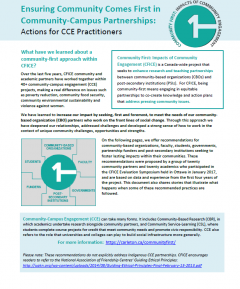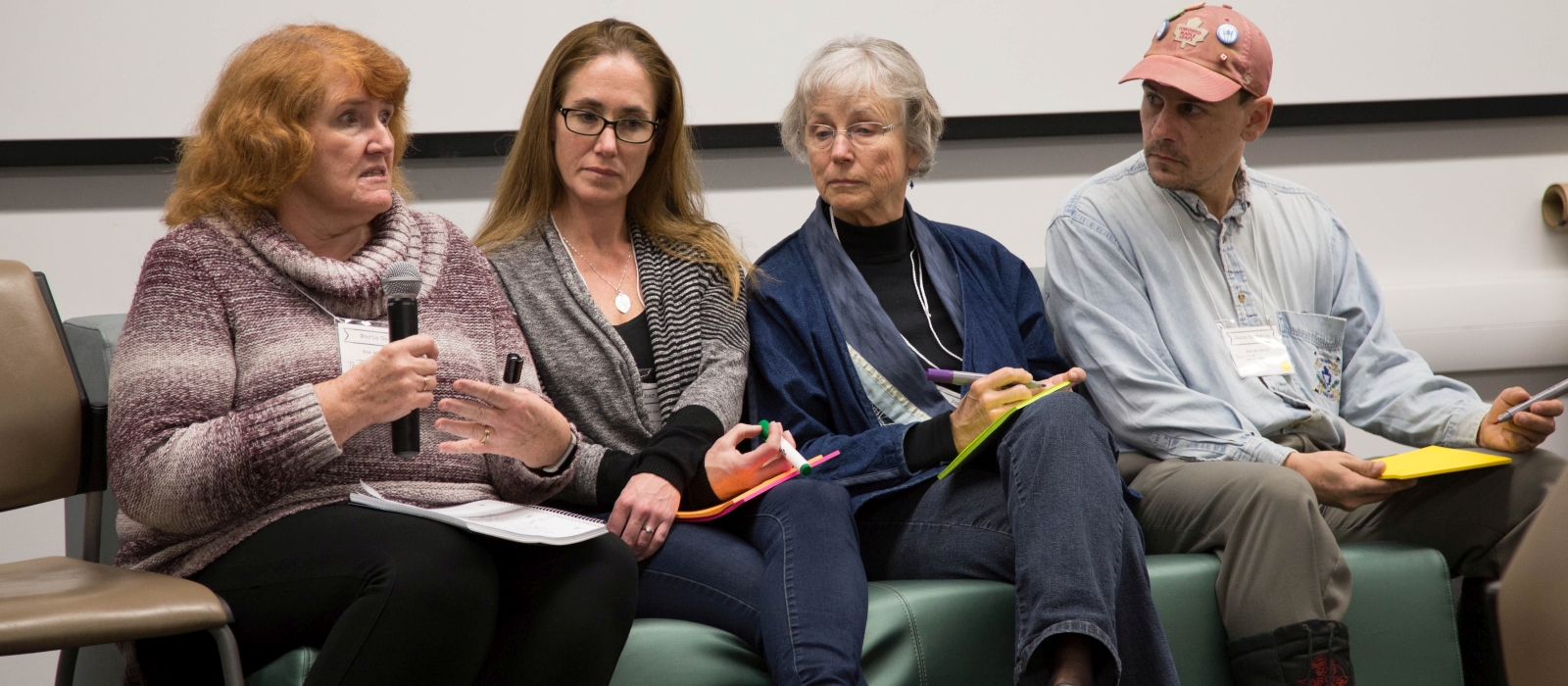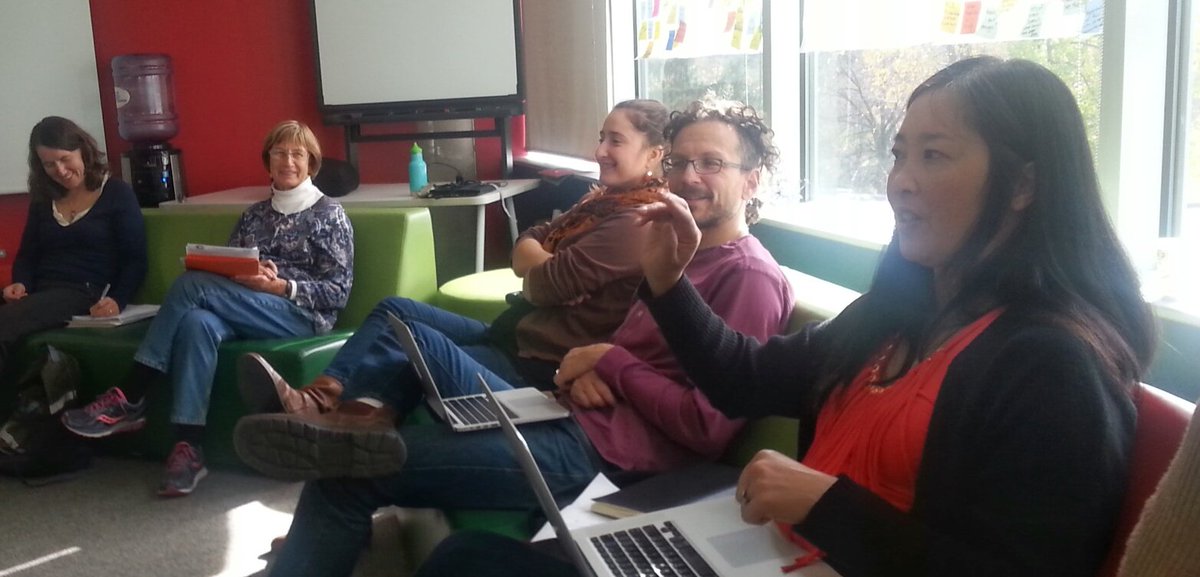What have we learned about a community-first approach within CFICE?
Over the last five years, CFICE community and academic partners have worked together within 40+ community-campus engagement (CCE) projects, making a real difference on issues such as poverty reduction, community food security, community environmental sustainability and violence against women.
We have learned to increase our impact by seeking, first and foremost, to meet the needs of our community-based organization (CBO) partners who work on the front lines of social change. Through this approach we have deepened our relationships, addressed challenges and developed a strong sense of how to work in the context of unique community challenges, opportunities and strengths.
Below, we offer recommendations for those seeking to foster lasting impacts within their communities, including:
- Community-based organizations
- Faculty
- Students
- Governments
- Partnership funders, and
- Post-secondary institutions
- Community-Campus Engagement Professionals
These recommendations were proposed by a group of twenty community partners and twenty academics who participated in the CFICE Evaluation Symposium held in Ottawa in January 2017, and are based on data and experience from the first four years of the project.
Please note: These recommendations do not explicitly address Indigenous CCE partnerships. CFICE encourages readers to refer to the National Association of Friendship Centres’ Guiding Ethical Principles.
Community-Based Organizations
Community partners recognize the importance of strong community voices in helping to set the terms of engagement among CCE practitioners, in contributing to equitable decision-making processes, and in giving others greater access to community expertise within CCE projects. From our work with 50+ community partners within CFICE community projects, we have learned that making community priorities clear to CCE partners at the start of a project — and listening to partners’ ideas and concerns — helps all involved better understand each other’s needs, roles and expectations. Good communication also helps everyone recognize when project parameters or relationships may need adjustment.
In addition, when community partners connect with other community peers involved in CCE projects, they hear about experiences and gain insights that may help in navigating their own project hurdles. They also learn how to strengthen research capacity, and access resources and networks that can bring greater visibility to important issues in their communities.
Actions Community-Based Organizations can take to ensure community priorities come first:
- Engage strategically in CCE projects, clearly communicate organizational needs to partners, and opt out of projects that do not add value to your organization.
- Build reciprocal relationships with faculty members/PSIs in CCE projects to understand one another’s cultures, realities and needs.
- Develop peer-to-peer opportunities for information exchange and collaboration among CBOs about how to engage with post-secondary institutions (PSIs), and to help others translate information coming from PSIs.
Faculty
Faculty approach new research endeavours with hopes of making a meaningful research impact, publishing their findings and offering students unique research contexts and training. CFICE community projects have demonstrated that personal commitment among academics really makes a difference in fostering community-first CCE.
For faculty new to CCE, being open about expectations and needs at the start of a CCE project contributes to a shared understanding of how to move forward on project goals.
For experienced academics, recognizing the broad value of community expertise helps faculty gain access to new perspectives and a diversity of views. Being ‘community-first’ for faculty means communicating in ways that relate respectfully to community partners, and mentoring students to adopt this approach. It also means advocating for policies that encourage a community-first approach to CCE within their institutions so that newer faculty members can follow their lead.
Actions faculty can take to ensure community priorities come first:
- Assist in the development of equitable CCE principles and practices that include:
- Clarifying roles, expectations and limits with regard to engagement/political action with community partners and ownership/control of community knowledge
- Recognizing community experience, and valuing community knowledge (and opportunities to co-create knowledge) with honoraria and adequate funding
- Engaging respectfully and strategically with partners in the community (recognizing that CCE takes resources and time)
- Accessing plain-language training, and incorporating plain-language within diverse forms of knowledge mobilization
- Support students in developing long-term CCE relationships and projects, by:
- recognizing existing community knowledge and skills held by students
- training students in ethical practices of engagement with community
- offering CCE mentoring and travel advances
- Support strengthened institutionalization of community-driven CCE, by:
- Building a community contribution into research grant funds
- Recognizing faculty involvement in CCE within tenure and promotion processes
- Participating in CCE communities of practice
- Advocating for CCE training for faculty (e.g. ethics, cross-cultural awareness, technological method)
- Creating community pathways (e.g. promoting student recruitment stories)
- Developing greater sensitivity to complex and diverse aspects of community
- Addressing issues of power in CCE at intersections of race, class, gender, colonialism
Students
Students increasingly look for opportunities to work on real-world problems and build key career skills through applied research. Community-first approaches to CCE offer students the chance to understand community issues from multiple perspectives, as well as participate in meaningful community research efforts.
Students contributing to CFICE projects over the last five years have brought energy, fresh perspectives and lived experience to their work on-the-ground with community experts, and they have deepened relationships by really listening to community partner voices. Moving forward, the student experience can be further enhanced by seeking out opportunities for CCE training, and by sharing experiences and reflections with others about how to navigate CCE cultures, relationships and hurdles.
Actions students can take to ensure community priorities come first:
- Listen and respond respectfully to community partners. Understand that you are part of a bigger relationship, and learn from the community.
- Seek out opportunities to enhance and co-create CCE skills and capacity (e.g. ethics, research project development, plain language writing skills).
- Make connections and get actively involved in developing longer-term CCE projects, alliances and networks.
- Take pride in CCE work, and share your experiences with/mentor other students.
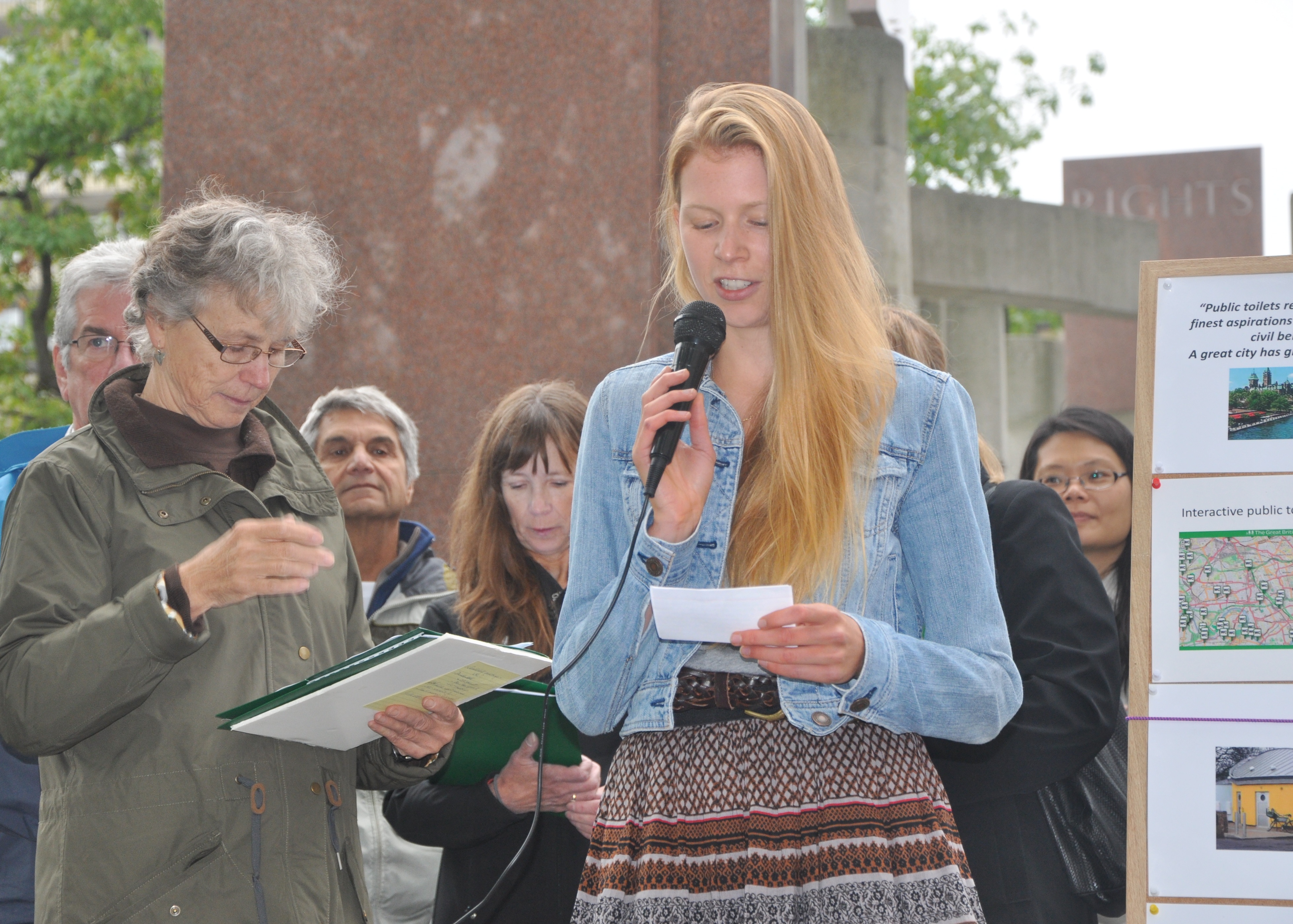
CFICE-funded student Rachel Canham, right, presents a report at the GottaGo! press release in September 2014. Photo credit: Patricia Ballamingie.
Governments
Governments at all levels increasingly recognize the value of community-campus engagement in enhancing community resilience, contributing to diverse forms of innovation, and strengthening the knowledge base for evidence-based policy. Further, student engagement in CCE (e.g. through community service-learning) is valued by provincial governments in particular for offering a unique form of work-integrated learning. Our research shows that community-first CCE provides these students with meaningful civic engagement opportunities that allow them to bring their own rich backgrounds to benefit the common good, while building their confidence, and enhancing both workplace as well as livelihood skills.
Actions governments can take to ensure community priorities come first:
- Provide greater institutional and funding support for sustained multisector CCE partnerships between PSIs, the non-profit sector, and other key sectors.
- Recognize the value of community-based brokers in facilitating effective CCE partnerships, addressing community goals and supporting student advancement.
- Join collaborative networks (e.g. including partners such as provincial higher education authorities, local governments) that recognize the significance of work integrated learning and are committed to expanding CCE.
- Recognize and support Indigenous and community-based institutions as leaders of CCE partnerships.
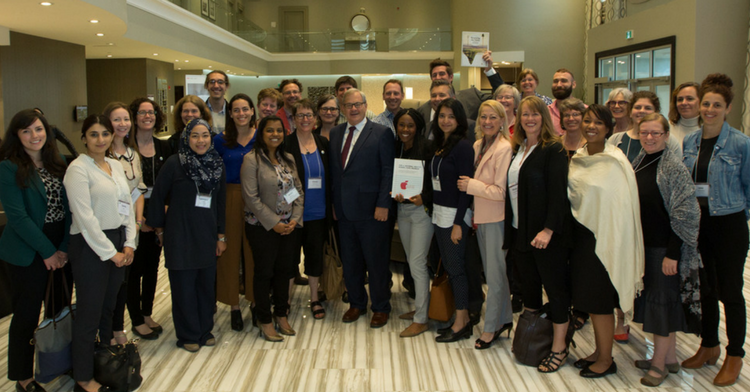
Attendees at the Ottawa Food Summit, advocating for a Canadian National Food Policy. ©Food Secure Canada
Funders
Funders of CCE play a critical role in providing the financial resources to make many good things happen. But not all funding programs are alike. A community-first approach to funding means ensuring CBOs have a strong voice in how funds are directed, and of reducing uncertainty and bureaucracy surrounding access to those funds. In addition, enabling access to institutional resources, such as libraries and meeting spaces, helps to boost community capacity and fosters stronger connections between faculty, students and community participants in CCE projects.
Actions funders can take to ensure community priorities come first:
- Address key funding challenges to CBO participation in partnerships, by:
- encouraging co-governance of CCE funds by community and academic partners, and including CBO representation on budget committees;
- providing increased and more direct funding of CBO participation;
- recognizing true costs in time and resources incurred by CBOs for administration and reporting; and
- flowing money to CBOs early on in the project timeline to demonstrate trust.
- Include CBO representatives with CCE experience on grant adjudication committees.
- Recognize Indigenous partners and community partners as leaders of CCE partnerships in ways meaningful to them.
- Join collaborative networks committed to expanding institutional support for sustained multi-sector CCE projects as equal partners, and not just as holders of purse-strings.
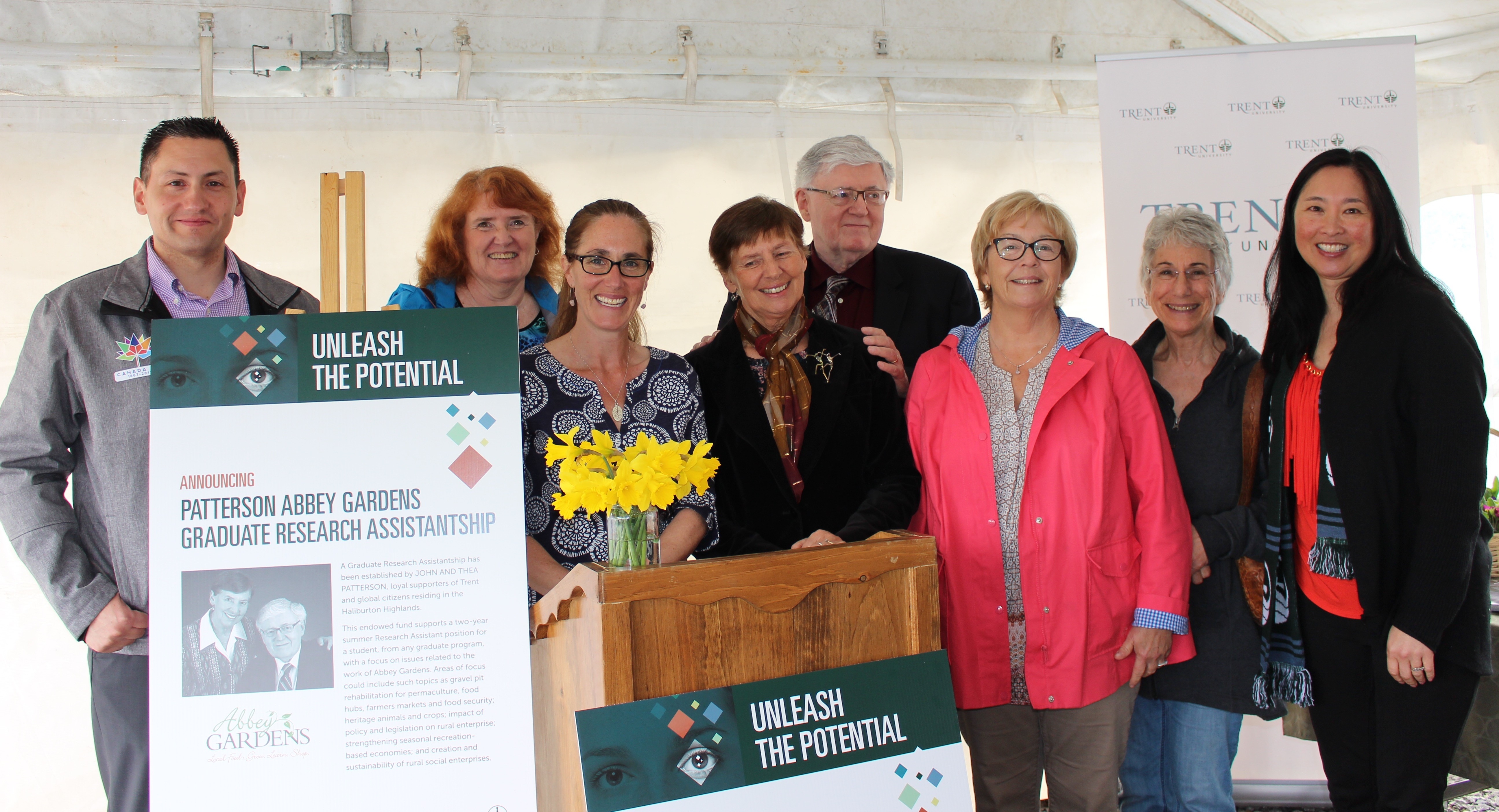
Donors Thea Patterson and John Patterson donate to fund CCE partnerships between Abbey Gardens and Trent University graduate students. ©Nadine Changfoot
Post-Secondary Institutions
The post-secondary landscape is changing, as more and more institutions come to acknowledge and revisit their roles as partners in the building of social infrastructure in their communities. This context is taking shape as institutions also work to attract exceptional faculty and students that will be equipped to address pressing community challenges both now and in the future.
Within CFICE projects over the last five years, we have discovered how support from PSIs can help to set a path for broader research and community impacts. Building on these experiences, PSIs can further shift institutional culture to strengthen community-first CCE and deepen connections to community, for example by supporting faculty in CCE work and enabling CBO access to institutional resources such as libraries and meeting spaces.
Actions post-secondary institutions can take to ensure community priorities come first:
- Develop and support a professional working circle (including faculty, professional staff, senior administration, and community partner representation) for CCE.
- Demonstrate a commitment to communities by supporting significant faculty and student involvement in CCE work (e.g. develop plans for mentoring faculty, include CCE as part of service role; invest in knowledge mobilization as part of research support).
- Provide expanded and ongoing CCE training for post-secondary administration, faculty and students (e.g. teaching about community expertise, cross-cultural awareness, plain language communication training, CCE curriculum and career guidance for students).
- Develop, promote and build networks for tenure and promotion standards that meaningfully reward community-engaged scholarship by:
- Co-developing metrics with community partners for CCE impact and efficacy
- Valuing non-academic outputs of CCE projects
- Valuing community expertise (e.g. letters from CBOs to support tenure files)
- Including CSL incentives related to teaching
- Provide institutional resources for community partners (e.g. online library access, space for in-person meetings, spaces/interfaces to encourage new initiatives, funding for community-based brokers).
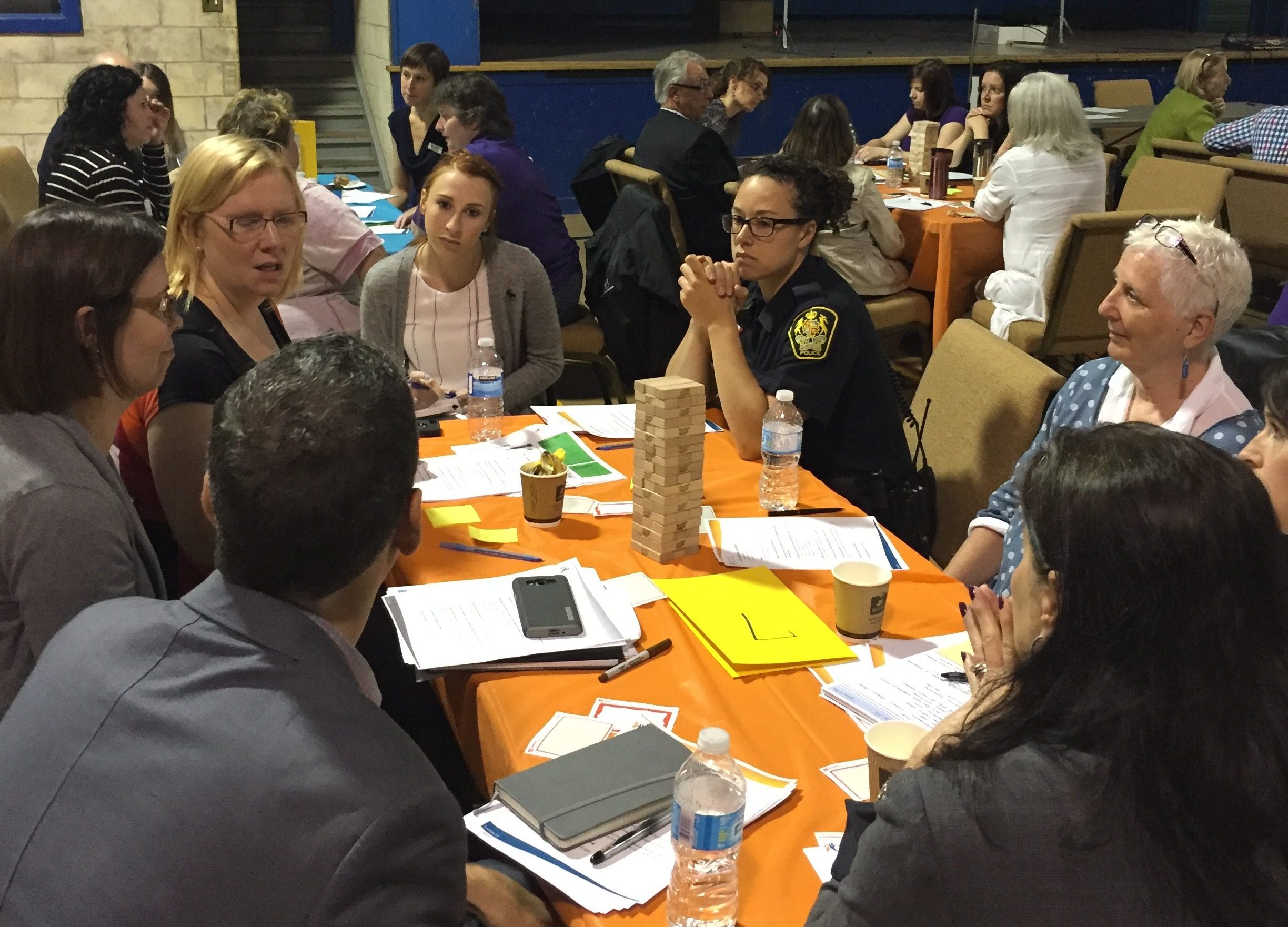
The Living SJ team includes members from all sectors of the Saint John community, including business, government, and post-secondary institutions. ©Melanie Hientz
Community-Campus Engagement Professionals
Please note: While the other sections of this report are based on data from Phase I of CFICE, this section has been assembled from interviews with three community engagement professionals with experience in broader CCE efforts.
Community-Campus Engagement Professionals (CCEPs) are non-academic staff at post-secondary institutions, or members of not-for-profits, whose role is to facilitate relationships between post-secondary institutions and the community. Lina D. Dostilio and Lane G. Perry define these professionals from the campus side as “[s]taff whose energy, professional identity, and growth trajectory bring them to change-oriented and civically oriented community engagement” (2017, p.3). Community-based professionals also bring this change-orientation to their work to connect their organizations with post-secondary campuses.
Sometimes called brokers, other times referred to as boundary-spanners, these professionals differ from faculty and/or community professionals in that they often hold multiple responsibilities with respect to community-campus engagement, many of which are administrative in nature. These responsibilities can include logistical planning and coordination, administering funding relating to the partnership, relationship building and maintenance, and providing training and development for faculty, students, and community.
While there is a variety of different structures that house community engagement professionals, from campus-based service-learning offices to community-based brokers such as the Trent Community Research Centre, the main goal of these professionals is to prioritize inclusive practices for increasing the quality and diversity of partnerships between community organizations and post-secondary institutions.
Actions CCEPs can take to ensure community priorities come first:
- Build relationships with community partners by:
- Ensuring that partnerships are equitable by understanding community needs, experiences and perspectives.
- Participating in the community through networking and being involved in community action.
- Recognizing the research needs of community partners and choosing academic research that adds value.
- Managing expectations about the outcomes of CCE work. For example, being realistic about chances for funding.
- Responding to the evolving needs of community partners by customizing business practices, refining workflows and keeping current with changing priorities.
- Sustaining relationships with community partners by building trust and increasing the level of engagement over time.
- Build support for community-driven CCE in post-secondary institutions by:
- Advocating for CCE training for faculty and students.
- Partnering with administration to promote and design CCE initiatives.
- Network and form relationships with campus groups and faculty who are involved in CCE work.
- Build partnerships with student or administrative groups that support student engagement and work to create new student engagement initiatives.
- Support students who are currently working on CCE projects.
- Facilitate communications between community and academic partners by:
- Deciding goals and roles from start of the project.
- Understanding the constraints and available resources.
- Ensuring that project’s status is transparent throughout project.
- Recognizing when support is needed.

